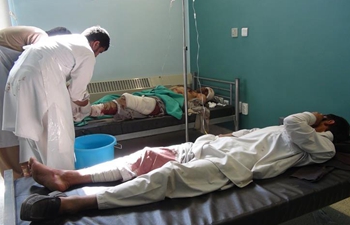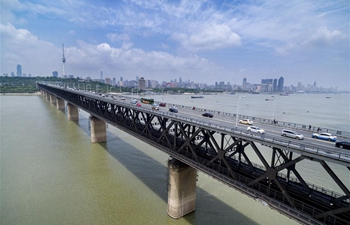ROME, Oct. 17 (Xinhua) -- Moody's Investors Service has confirmed its negative outlook on Italian banks due to their high levels of non-performing loans (NPLs), Italian news agency ANSA reported Tuesday.
Finance Minister Pier Carlo Padoan replied in a radio interview with RAI public broadcaster that thanks to government measures the "stock of NPLs has dropped 25 percent since the beginning of the year".
"I believe the image (Moody's gives) does not represent reality," the minister told RAI 1 radio.
According to data obtained from the Finance Ministry, gross NPLs held by Italy's banks were reduced from a total of 200.9 billion euros (about 236 billion U.S. dollars) in December 2016 to 172.8 billion euros in August 2017.
In the same period, net NPLs -- meaning gross bad loans minus provisions made by banks to cover them -- fell from 86.8 billion euros in December 2016 to 65.3 billion euros in August 2017 -- a fall of 24.8 percent, which is the figure Padoan referred to earlier Tuesday.
Italy is slowly pulling out of two economic recessions that were sparked by the global financial crisis of 2008 and by the sovereign debt crisis of 2010. The prolonged crisis caused households and businesses to default on their loans, which piled up on bank balance sheets.
Beginning in 2015, the Italian government struggled to reform the country's banking sector to make it more crisis-proof, and to get rid of its NPLs.
Moody's has in the past praised these efforts.
"The government has managed to stabilize the banking sector," Moody's said on Oct. 6 this year, affirming Italy's long-term issue rating at Baa2 with a negative outlook.
"While restoring the sector to health will take time, the tail risk of a deeper banking crisis with significant impact on the sovereign's balance sheet has been reduced with the government's actions on the weakest banks earlier this year," it said.
"At the same time, the downside risks to Italy's creditworthiness remain elevated," the ratings agency said, citing Italy's high public debt and uncertainty ahead of the next general election, likely to be held in early 2018.
Italy must now also contend with the European Central Bank (ECB), which sparked criticism earlier this month when it suggested Eurozone banks should be required to set aside money to cover 100 percent of unsecured NPLs within two years.
The effects would hit Italian, Greek and Portuguese banks the hardest, Standard & Poor's ratings agency said in a statement on Monday.
Italy, Greece, and Portugal have suffered the most from the global economic crisis, and have among the highest levels of unemployment in the EU.
Forcing banks to cover impaired loans 100 percent could cut lending to businesses and choke weak economic recoveries, critics argued.
However, according to the European Systemic Risk Board (ESRB), keeping NPLs on the books too long, even if the banks cover them with provisions, is bad for the real economy in the long run.
"The presence of an elevated NPL stock is a symptom of broader solvency problems in the real economy, especially in the corporate sector, and depressed demand for credit. All these factors adversely affect potential economic growth," the ESRB wrote in a July 2017 paper titled "Resolving NPLs in Europe".

















